

Prior Episodes | 7976 (1 BBY) | Next Episodes
Continuity & Analysis
Star Wars: Rebels - Heroes of Mandalore (2017) [S4E1-2]
Sabine leads a mission to free her father from the Empire, but finds that
a past mistake has been resurrected with deadly consequences.


CONTINUITY
These two episodes form a single storyline about the Mandalore Rebellion. Mandalore is the only world seen in these episodes:

Episodes 1 through 13 of Season 4 take place in 7976 (1 BBY). The final three episodes of this series take place in 7977 (0 BBY).
This means there are only five storylines which take place in this entire calendar year, with the last three taking place in rapid
succession. Episode 3 takes place not long after Episode 2, Episode 5 takes place shortly after Episode 4, and Episode 8 must be
relatively near in time to Episode 7. Based on the events, conversations, and logical deductions regarding how the time was spent,
it must be the case that the Spectres spent at least a few months aiding Sabine and her family in the Mandalorian civil war.
The season 3 finale suggested they were headed to Krownest immediately to help, and while the premier of this season does
seem to take place soon after, there is no reason why it could not be months later. It would in fact make a great deal of sense
that it would take months to be in position to move on Sundari itself, as they were barely holding their own at the end of
7975 (2 BBY) in a war that had already lasted months. Based on all evidence, this storyline takes place at the second quarter
of 7976 (1 BBY), or possibly slightly later, and it must be 3 to 6 months after the Battle of Atollon. Ezra has now been Kanan's
apprentice for about three and a half years, or for three and three quarters if these events are 6 months after Atollon.
- The Mandalorian civil war has progressed somewhat since the end of last year, at which point Clan Wren's forces were "stretched to their limit."
This struggle has now been going on for between 7 and 10 months, based on the approximate dates of episodes. It is clear that various
anti-Imperial clans have taken up arms but have not formed a unified front. The fact that they are now able to stage operations on
Mandalore itself suggests their individual efforts have collectively pushed the pro-Empire forces back to some degree. This operation was
also hastened by the need to free Alrich Wren. His location was leaked by Clan Wren's "spies in the capital", who apparently have "been right
so far", suggesting that some of the rebel Mandalorian success over the last half year were due to a reliable intelligence network.
- Tiber Saxon has replaced his brother Gar Saxon as Imperial Viceroy of Mandalore. Gar was killed between 7 and 10 months earlier, during events
which began the civil war, and thus Tiber has been in command since that time and for the entirety of the inter-clan warfare.
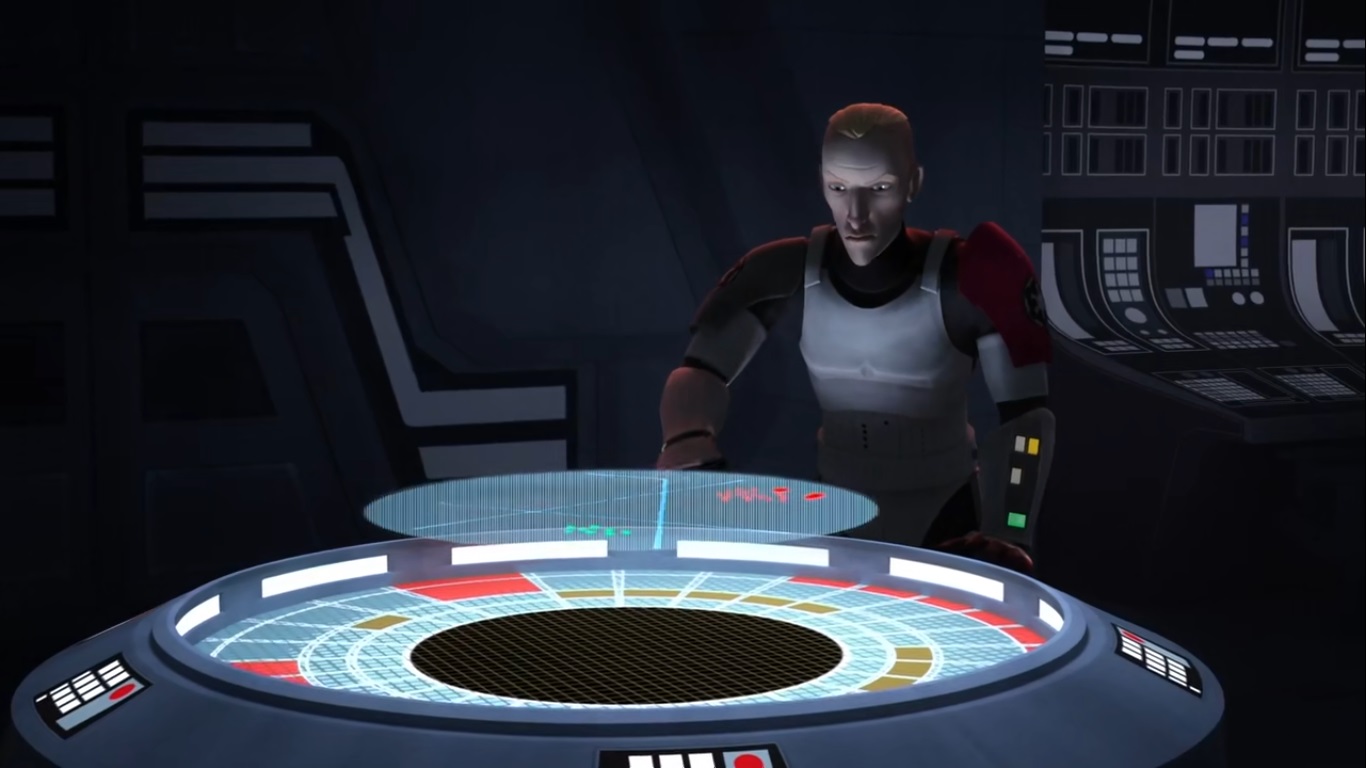
- Bo-Katan Kryze was last seen 18 years earlier in The Clone Wars 'Shattered' (S7E11), where she had just been made regent by the Jedi.
After the Empire took over, Bo-Katan refused to obey the Emperor and was betrayed by the Saxon clan, who were placed in control of
the Mandalorian government. Bo-Katan is "still seen by many as Mandalore's rightful ruler", and although Sabine hasn't met her, she
has heard of her, and states that her "commitment to Mandalore's freedom is legendary." Bo-Katan initially refuses the Darksaber
because that weapon is symbolic of the right to rule Mandalore, and she believes she already proved herself a failure as leader.

How is the air still breathable on Mandalore after the complete collapse of its ecosystem? This apparently happened at
least decades earlier, possibly during the Mandalorian civil war in 7935 (42 BBY), during which the majority of its already
modest population were killed. Mandalore was already in this state during the Mandalorian civil war in 7958 (19 BBY),
which was part of the Clone Wars. Significant amounts of free oxygen in an atmosphere is almost always the product of
huge numbers of photosynthetic creatures, usually a planet-wide ecosystem containing algae, land plants, and trees.
SW creators are apparently unaware of this, as there is a never-ending supply of lifeless planets with breathable air
in this galaxy. It is true that there may be geological conditions on planets which are unlike Earth where oxygen is
actively produced without the presence of life, as our current science has limited data regarding other planets in our
galaxy. This could account for some of these worlds, but in the case of a formerly terrestrial world like Mandalore,
the oxygen there was previously produced by photosynthesis in plants removing carbon from the atmosphere and
releasing oxygen as a by-product. After the collapse of the ecosystem, the air should have become gradually less
oxygenated, to the point that it becomes insufficient for breathing. This ecosystem totally collapsed, since "it never
grew back" after the initial disaster, because it "never had a chance to" due to "continuous war." This suggests that
the only life which could remain would be microscopic. Many microorganisms produce oxygen, and in large numbers
can support an atmosphere, however these are typically green, photosynthetic creatures like algae, which need water
to fuel their reactions. Mandalore does not appear to have any surface water, certainly not enough to support this.
Main Article: Planetology

Hera's conversation with Kanan makes it sound like the Spectres recently arrived on Mandalore from Atollon. There is
absolutely no way that all five storylines set in this year take place in rapid succession, and the dialogue and context in
the following storyline places it beginning just after the events in this storyline, and is the only story before the last
three storylines which must take place near the end of the next calendar year. There are only two places in the narrative
which could contain the missing 6 to 9 months of this year, and at least 3 of those months took place at the beginning
of the year, based on several factors. Hera's statements are meant to suggest there has been no large gap in time,
however do not definitively rule out an interpretation that it is much later. Hera asks "What's the status of the Imperial
occupation?", and being told that "Mandalore is under complete lockdown. Civil war is raging", she concludes "I'm sorry.
I hate to say it, but sounds like the planet is lost." This sounds more like an initial analysis than a report on recent
developments in a half-year assignment. Hera explains that "Sabine's father is important, not just to her, but to her
people. That's how I persuaded Mon Mothma to let you help. But once that's done, I need you to come back."
This statement also favors a shorter time gap, but is ambiguous enough to support either interpretation. Kanan's
response to that, "oh, having trouble overthrowing the Empire without me?", and Hera's statement that "we were
hoping you could have freed him by now", could fit either way, but best support the idea that it is months later,
which must be the case. The timeline of season 4 material was clearly not well-developed in advance.
- Tojnun was a Mandalorian painter, considered to one of the "pre-exile masters." It is unclear what the "exile" refers to in this context, obviously
it is an academic term for a cultural period in Mandalorian history, however it does not correspond to any known event in Mandalore's
history within SW legendary material. It could be a reference to the period just over 1000 years prior, during the galactic dark age,
when many Mandalorians left the homeworld due to plague and hardship, however this does not really fit the description of an "exile."
- Mandalorian armor is made from beskar steel alloy, a unique creation of Mandalorians derived from metals mined on Mandalore. It is a limited
rescource and has great cultural and religious significance to the Mandalorians. Their armor is usually centuries-old and handed down in
families and clans. New wearers may have their armor reforged somewhat to suit them better, but "the battles, the history, the blood, all
lives within it." This armor is part of the Mandalorian identity, which "makes us Mandalorians who we are." Exactly how Sabine's weapon
is able to only effect this metal, and in such a catastrophic manner, is unknown. It is stated that "the arc generator's energy pulse is drawn
to the beskar alloy in the Mandalorians' armor, superheating it and instantly vaporizing the target." This seems unlikely based on the laws
of physics, however the advanced knowledge of energy transmission and particle physics in the galactic civilization certainly makes it
impossible to rule out the development of something like this. At the same time, this is apparently a novel development in the galaxy,
developed through Sabine's technical genius during her time as an Imperial cadet. It has since been rumored that the Empire was working
on "a weapon to neutralize Mandalorian armor" and that it had already been tested on people. This is considered "an abomination" and
"the weapon of a coward" by Mandalorians, since it is designed not only to kill them but to undermine their culture and remove their
people's greatest military advantage. As unlikely as it is that an energy which could do this to beskar seems to effect nothing else around,
it is even less likely that a simple modification of the system could be used to target the stormtrooper armor in the same way, while again
having no effect on anything else. Stormtrooper armor is made including metals which are found in Imperial equipment and ships as well.
The unique composition of beskar made this weapon remotely plausible, however its use against the Empire raises a number of continuity
issues, which probably invalidate other material if considered canon. As this unique weapon was destroyed, its best just to ignore this.
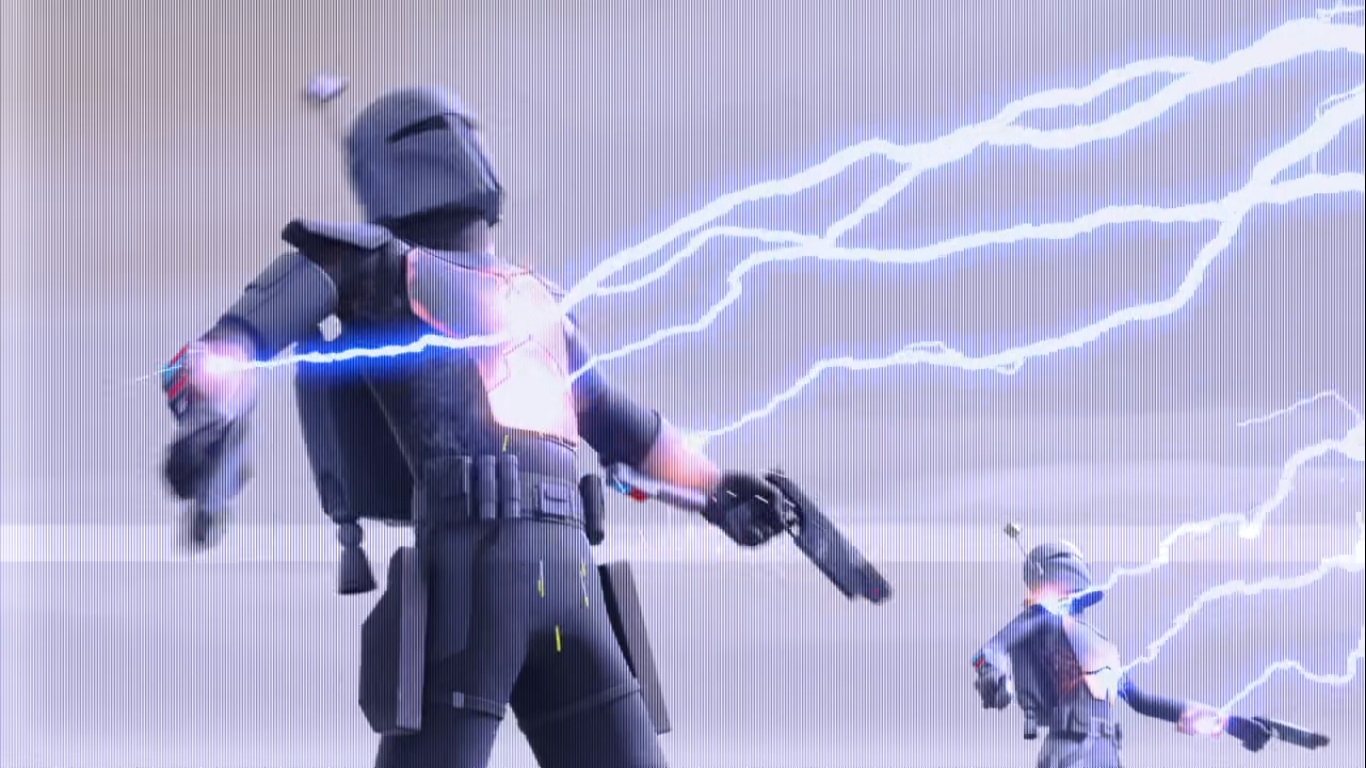
- Tiber Saxon wears standard Imperial armor, and as Thrawn points out cares far less about preserving Mandalore's culture and traditions
than his brother Gar had. Tiber states that "I am the Empire! Palpatine has shown me the way to true power." Although the Empire is
a monarchy, and uses regal titles and forms, it is primarily a fascist state. The environment it creates is conducive to its philosophy and
goals, which emphasizes erasing culture, traditions, and ways of life in favor of the New Order. Leaders on Mandalore were traditionally
chosen by right of descent and blood, as well as by martial prowess. Tiber Saxon adheres to the philosophy and example of Palpatine,
who has shown that title and authority can simply be taken, by those with enough will to power. Once one has the backing of a large
enough force of superior power, traditional legitimacy and martial prowess no longer matter. The Empire initially employs those like
Gar Saxon who are in some ways traditionalist but are willing to co-opt their values to the service of the state. As the Empire progressed,
these kinds of leaders are gradually replaced by those who fully embrace fascism as an ethos, and are thus capable of anything.
Main Article: Darth Sidious and The Plan
- The Mandalorian civil war which began in 7975 (2 BBY) transitions into a Mandalorian revolution after the death of Tiber Saxon. Bo-Katan
states that "this is only the beginning", as "the Empire will send everything they have to crush Mandalore." Bo-Katan's new government
has the support of her Clan Kryze, along with Clan Vizsla, Clan Rook, Clan Eldar, Clan Wren, and the Protectors. It is likely that other
clans added their support in the coming months. Despite this, pro-Imperial forces still control the capital, have the support of
the Empire, and the backing of many other clans. It can be assumed that the war was still taking place on other fronts while these
events on Mandalore were happening, and that Saxon's death would do little to change that in the short term. Based on later
material, Bo-Katan's revolution does temporarily succeed in taking control of Mandalore at some point in the next 12 months.

When was the Imperial reprisal against Mandalore? The response Bo-Katan mentions is coming probably happened
almost immediately after these events, however since pro-Imperial forces are still in partial control of the capital,
Mandalore, and some Mandalorian planets, it is likely the Empire continued with the kind of support it was already
giving. This was probably increased, and perhaps a greater Imperial military force was sent to reinforce their allies,
however there was not yet any need to take drastic action. The destruction of Mandalore by Imperial fusion bombs
seen in The Book of Boba Fett 'Chapter 5' did not take place until after Bo-Katan's revolution succeeded, and
certainly not before Episode IV. An Imperial response of that scale would have been a politically dangerous
atrocity to commit before the dissolution of the Senate, whereas after the loss of the Death Star it became imperative
that the Empire demonstrate that it does not need a superweapon to destroy entire civilizations. The destruction of
Mandalore was a message and a last resort, used only after the Empire was successfully driven off by Bo-Katan's allies.
Main Article: Darth Sidious and The Plan
ANALYSIS
The last Mandalorian civil war before the destruction of Mandalore would see the last remnants of a once great civilization kill each other
in service to the Empire's efforts to divide and conquer their people. Sidious' strategy is to create situations in which opposing forces feel
they have no choice but to fight, thus weakening everyone involved, serving Sith interests of advancing conflict and suffering, and setting
the stage for his next moves. There is no better method for this than setting up a repressive government backed by the Empire, which will
lead inevitably to anti-Imperial forces and sovereignty movements challenging them. Each side of a planet such as Mandalore will choose
sides based on their individual priorities and self-interests, and will feel they have little choice but to fight their own people even if they
are wise enough to realize it is not in their collective interest. Mandalorian traditions respect authority and martial strength, so opposition
elements were slow to take action in their society. The Imperial-allied leadership remedied this by precipitating conflict and by placing
unacceptable conditions upon uncooperative clans, forcing them to choose conflict or servitude and death. Despite the many advantages
that Imperial support offers in terms of arms, logistics, and technology, the rebel clans have succeeded in turning the tide of the civil war
in their favor, at least to the point of a stalemate. This is a problem for Saxon and his Mandalorian allies, but not for the Empire. They will
either back the winner in the war and see their rebel opponents defeated, or see them weakened to the point the Empire can destroy them.
The trap set for Sabine is intended to provide a means for Saxon to preserve his regime and for the Empire to salvage the planet as a resource.
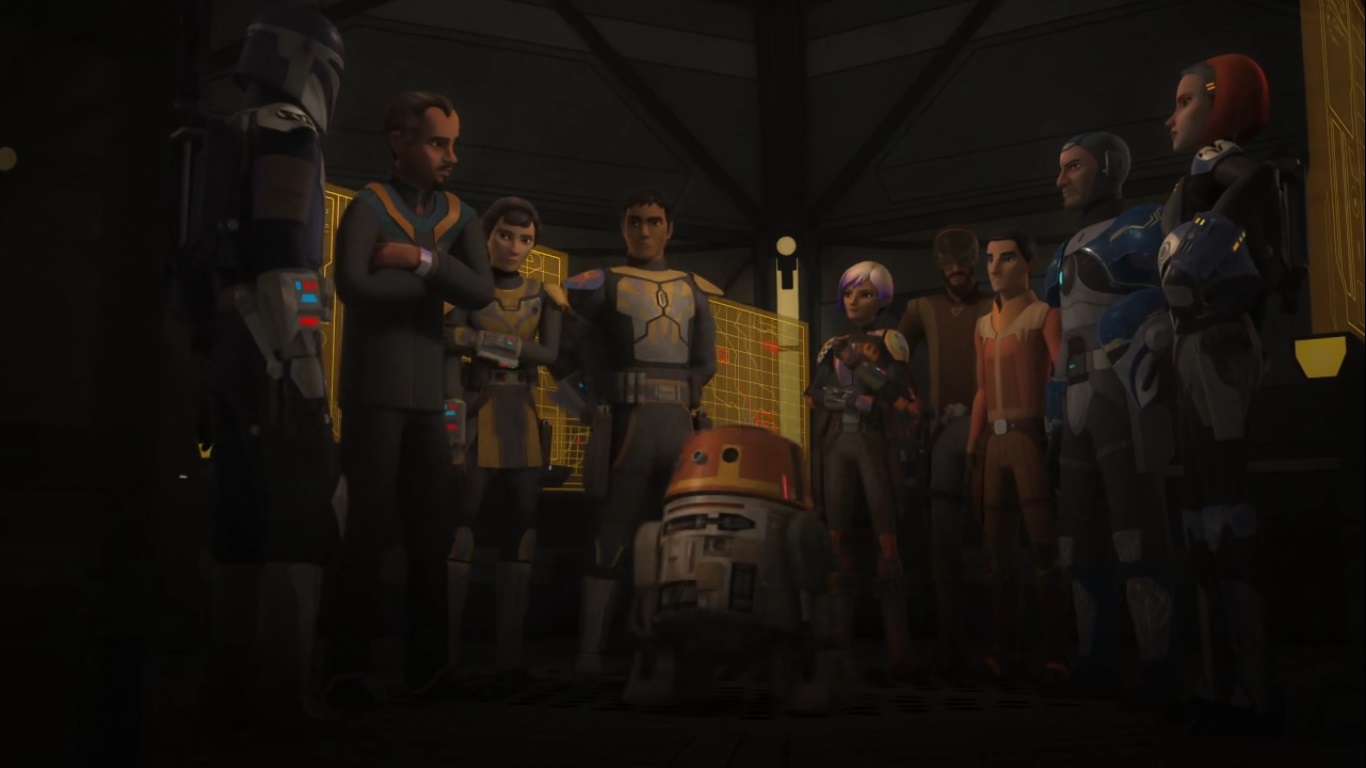
Tiber Saxon's embrace of Palpatine's fascist principles have led him to reject Mandalorian culture, tradition, and values. He does not care
about the Darksaber, Mandalorian leadership tradition and clan independence, or the Mandalorian Way. Palpatine's "way to true power"
does not care about honor, the right to rule, or Mandalorian religion, and would transform their culture until it was Mandalorian in name
only. This is why Saxon employs a cowardly weapon which "turns an armor legendary for its strength into a crippling weakness," which
strikes at the very heart" of Mandalorian tradition. Mandalorian religion is about achieving personal greatness through martial arts, and
their development of beskar armor was the greatest achievement of their quest. It was developed along with other Mandalorian tactics
and equipment to counter the power of the Jedi and their supernatural abilities. This armor's resistance to blaster fire was a significant
part of what made Mandalorian warriors so elite. Saxon's suggestion that "a Mandalorian without armor is no more than a common
soldier" is certainly overstated, due to Mandalorian culture's emphasis on martial training, however the vulnerability of any individual
to energy weapons does make beskar armor a significant advantage in combat. Saxon believes the loss of this advantage will humble
Mandalorian warriors, and that "fear will compel them to join the Empire." He also believes that his methods will "unite the houses"
and "bring peace", just as Palpatine and all fascists argue for the merits of peace through order and fear of violence. He asserts that
"Mandalore must evolve with me", as the alternative is to "destroy ourselves in a fight that cannot be won." Above all, Saxon's fascism
is a rejection of Mandalorian values of personal liberty, independence, and freedom, as his goal is to subjugate their people. As he states,
he is the Empire, and Mandalorians will have to follow him rather than follow the Way. He is not concerned about the Empire using his
weapon against Mandalorians, since they would be opposing him. "Unquestioning loyalty" is the only quality valued by a fascist order,
and the only way to survive under one, other than to overthrow it. Mandalorian culture also values loyalty, one of a few areas where
Sith philosophy and their principles overlap, however loyalty to the Empire would mean betraying all that Mandalorians stand for.
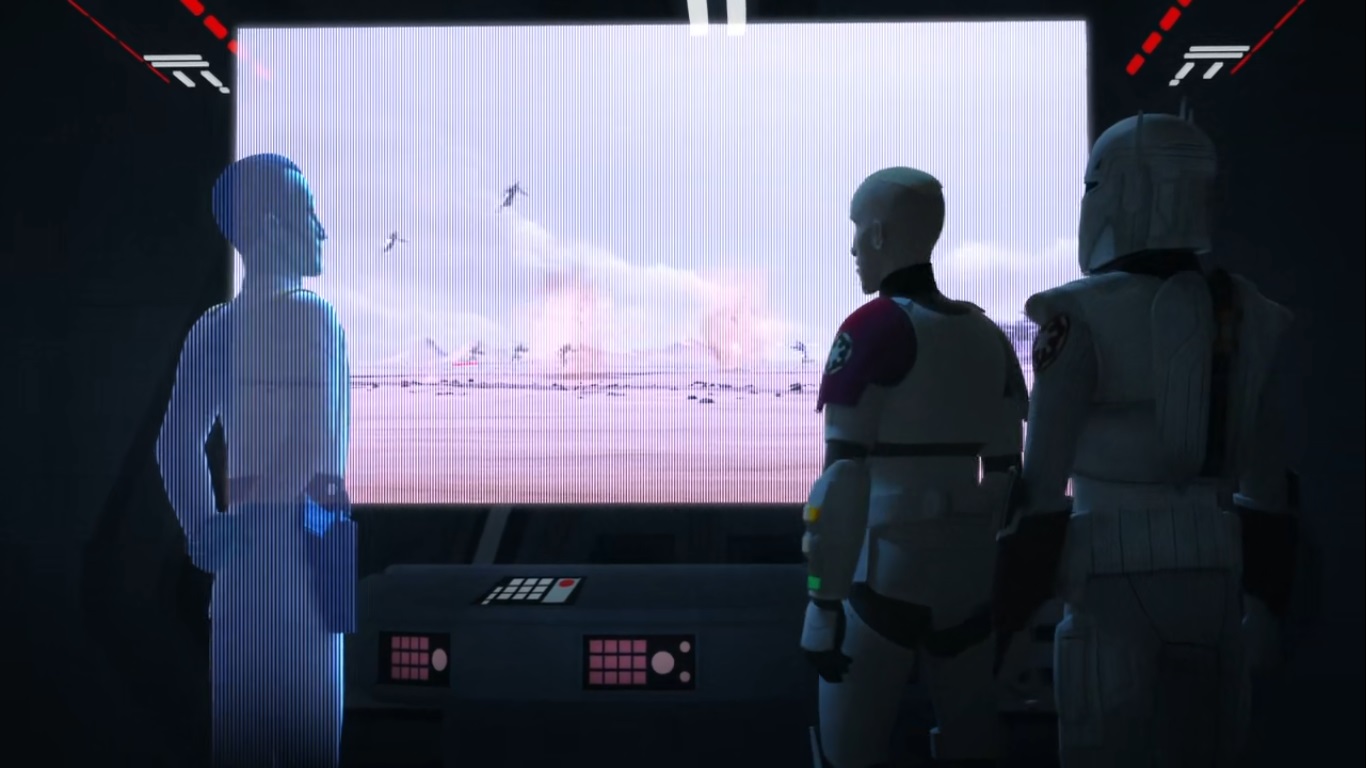
Bo-Katan follows the opposite path from Tiber Saxon, choosing to fight for Mandalorian traditionalism as she always does. Her choice
to refuse the Darksaber and leadership is guided by her respect for their beliefs and traditions, as is her eventual acceptance of them.
Her heritage and prior legal claim is why many still regard her as Mandalore's rightful ruler. Her return to leadership over a union of
clans while wielding the Darksaber at the outset of this Mandalorian revolution not only succeeds in eventually driving the Empire
from Mandalore, but also restoring the unity, priorities, and traditions of Mandalore. She tells Sabine that they cannot use dishonorable
means because it would go against what makes them who they are, and different from the Empire. Saxon and the Empire tried to rule
by fear, while Bo-Katan desires to rule by hope. Unfortunately, the Empire will punish Mandalore after their eventual success by wiping
out their homeworld from orbit and slaughtering the survivors. This is because the Empire needs to send a message to the galaxy that
any successful overthrow of the Empire locally is a suicidal move, and because the specific threat posed by Mandalore's skilled warrior
class is too great for Palpatine to tolerate unless it is under his control. Mandalorian religious devotion to warfare was responsible for
the gradual decline of their culture, population, and planets, a cycle of millennia which eventually led to this point, and the coming
diaspora of the now minuscule Mandalorian people. It was the return of the Darksaber a millennium earlier which began this last
chapter in classical Mandalorian civilization, as it became a focal point through which this process of decline was accelerated.
At the same time, throughout Mandalorian history it was also their religion and culture which was responsible for their achievements,
their rebirths from hardship, and their sometime unity. Bo-Katan shows this is still possible, and that Mandalorians can once again
come together under a leadership with values like that led by her sister, but with the martial traditions of Mandalore. They can make
a successful stand and overcome greater enemies. Mandalorians embracing their culture and Bo-Katan's adherence to it is not
the cause of Mandalore's final destruction, but it is part of the reason why the Empire cannot tolerate an independent Mandalore.
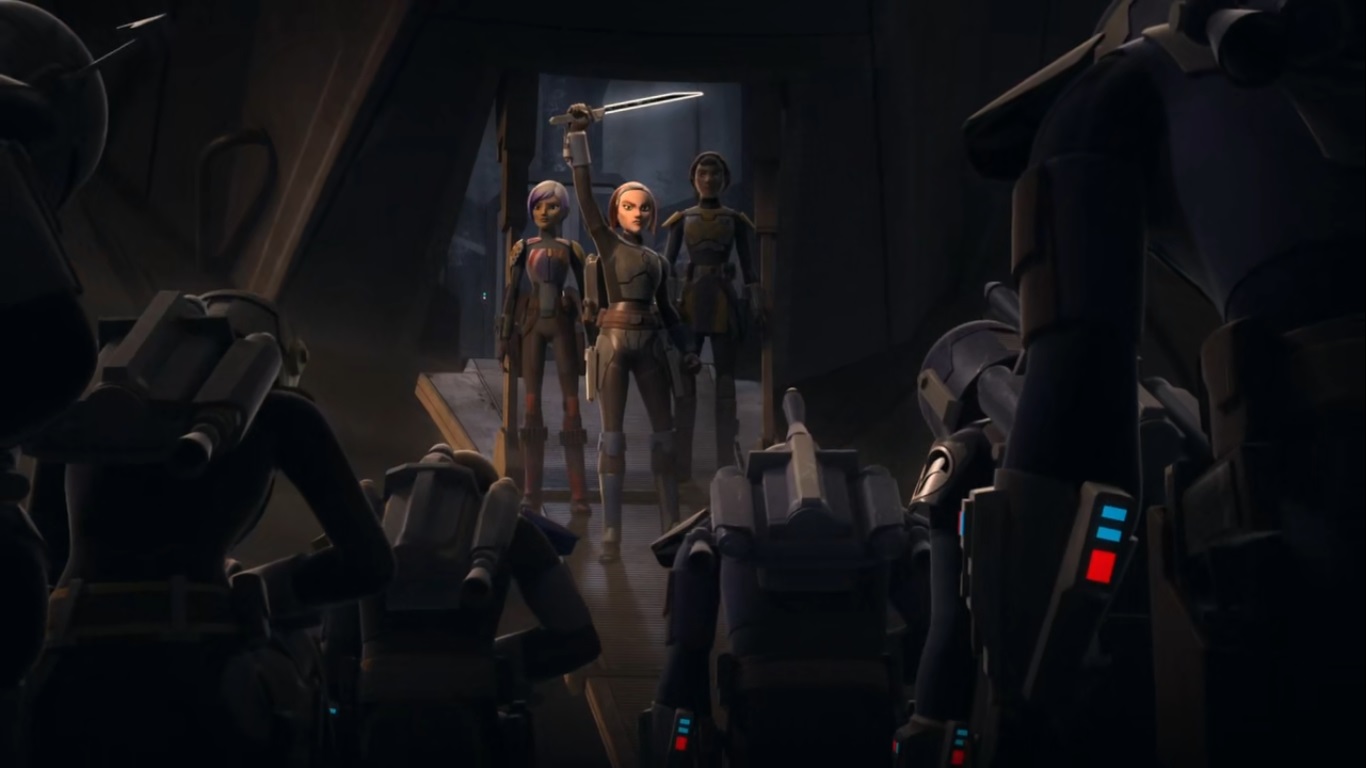
FURTHER ANALYSIS
Report Pending